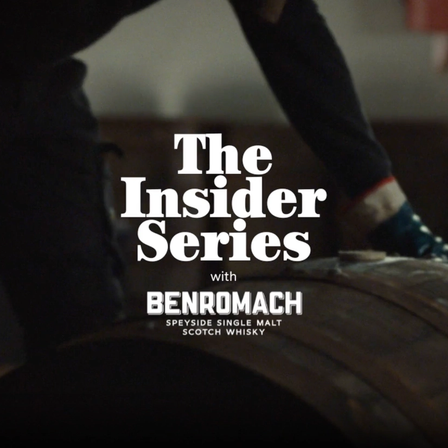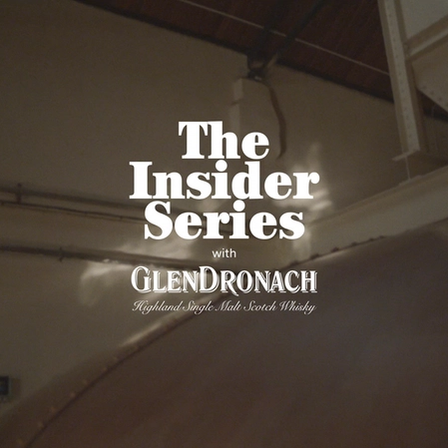- Insights
What is Blended Whisky?
- Words By Emma Gibbs

Blended whisky is made by combining malt whisky with grain whisky to produce a consistent flavour. Often produced in large volume, blended whisky makes up 90% of all Scotch whisky sales worldwide.
However, there is a delicate art to creating it – Master Blenders must possess an acute understanding of the individual characteristics of each whisky component.
Here we aim to discover the artistry, history, and science behind blended whisky.
The Birth of Blended Whisky
Blended whisky can trace its roots back to the mid 19th century, with its birth commonly attributed to Andrew Usher, a Scottish distiller, who sought to create a more consistent and palatable product. By blending malt whisky with grain whisky, he discovered a formula that not only maintained a high standard of quality but also introduced a new depth of flavour.
The Early Blenders
Andrew Usher went on to develop Old Vatted Glenlivet, but it was Scotland’s independent grocers who took the concept of blended whisky to the masses. They combined grain whisky with the heavier single malt whisky they already had in casks to top up their supplies and sold directly from their shops. Early blenders were:
Chivas Brothers
The Chivas Brothers grocery store in Aberdeen was an early blender and was eventually awarded a royal warrant when the store began to supply Queen Victoria and her household in 1843.
Johnnie Walker
John ‘Johnnie’ Walker began selling blended whisky from his Ayrshire grocery store in 1824 but it was his sons and grandsons who eventually turned whisky into the sole focus of the business.
Teacher
William Teacher began selling blended whisky from his wife’s grocery store in 1832 before eventually opening his own dedicated ‘dram’ shop in Glasgow in 1856.
Ballantine
George Ballantine, a farmer’s son, opened his own grocery store in Edinburgh in 1827. By 1865, he had set up a new, larger wine and spirits shop in Glasgow after successfully experimenting with blending.
These grocers went on to become titans of the blended Scotch whisky industry as we know it today.
The Art of Blending
The creation of a blended whisky is a meticulous art form.
Master Blenders, often regarded as the maestros of the whisky world, skilfully combine whiskies from different distilleries, each with their own aging history and flavour profile. Some casks may contribute rich, peaty notes, while others may impart sweet, fruity undertones.
The art lies in finding the perfect harmony, ensuring that no single flavour dominates the palate, and that the final product is greater than the sum of its parts.
Master Blenders
To become a master blender takes years of dedicated training while serving an apprenticeship under an experienced master blender. Not only do they need to have a keen ‘nose’ (sense of smell and taste), but they also need to have a deep understanding of the distillation and aging processes.
Well-known and established brands like Johnnie Walker and Chivas Brothers employ several talented Master Blenders.
Single Malts and Single Grains
Single malts are known for their depth of character, distinctive flavours, and regional nuances. By incorporating these into the blend, blenders add layers of complexity, creating a well-rounded and sophisticated final product.
Grain whisky, often produced in larger quantities in column stills, contributes a smoother and more approachable quality to the blend. It serves as a base upon which the more robust single malts can impart their flavours.
Aren’t Single Malts Better than Blends?
No, they’re just different.
The preference for single malt whiskies versus blends is completely subjective and depends on individual taste preferences. Both single malts and blended whiskies have unique characteristics and qualities.
Single Malt Whiskies
- Origin: Single malt whiskies are produced at a single distillery using malted barley.
- Flavour profile: They can often showcase the specific characteristic of the distillery and the region.
- Purity: Some whisky enthusiasts appreciate the purity and authenticity of single malts, as they are not mixed with whiskies from other distilleries.
Blended Whiskies
- Blend of malts and grains: Blended whiskies are a mix of malt whiskies and grain whiskies from different distilleries and are crafted to achieve a specific flavour profile.
- Consistency: Blends are known for their consistency. Master Blenders can adjust the proportions of different whiskies to maintain a consistent flavour across batches.
- Accessibility: Blends are often more accessible and affordable than many single malts, making them a popular choice for a wide range of consumers.
Ultimately, whether single malt whisky is better than blended whisky is a matter of personal preference but it’s worth trying whiskies from both categories to discover which you prefer.
Blended Whisky: A Global Business
As the appreciation for whisky transcends borders, so does the art of blending.
Blenders from around the world continuously experiment with different grains, cask types, and blending techniques, always pushing the boundaries of what is possible.
In the United States, bourbon and Tennessee whiskey producers are exploring the world of blending, marrying various ages and mash bills to create expressions that showcase the rich heritage of American whiskey-making.
Similarly, in Ireland, where the tradition of whiskey-making runs deep, Master Blenders are crafting exceptional blends that pay homage to the country’s whiskey legacy.
In Japan, blending has long been an art form. As most whisky production is ‘vertically integrated’ Japanese distilleries cannot rely on their neighbours for barrels to blend with, so have to make many types of whisky themselves, all in-house.
Appreciation
Blended whisky stands as a testament to the mastery of craftsmanship and the ongoing pursuit of perfection.
From the blending rooms of Scotland to the distilleries of Japan, the art of blending has evolved into a global phenomenon that continues to captivate the palates of whisky enthusiasts everywhere.


